#challenge-wwb
Explore tagged Tumblr posts
Text
Title: The Witch of Dragonrest Fandom: The Great Ace Attorney Ship: Barok/Kazuma Warnings: Minor violence, blood and injury, mention of death, mention of torture Words: 5646 (ch. 1) - ~21k (total) Synopsis: The vampire Barok receives the task of capturing a dangerous witch who has been hiding for years. When he finally meets Kazuma, however, he realizes that he is different from what he was told.
Prompts used: @badthingshappenbingo - Incapable of Disobeying @hurtcomfort-bingo - Hiding an Injury + Branding @mfbingo - Magic AU @seasonaldelightsbingo - Protecting Someone + Found Family.
My cards under the cut.
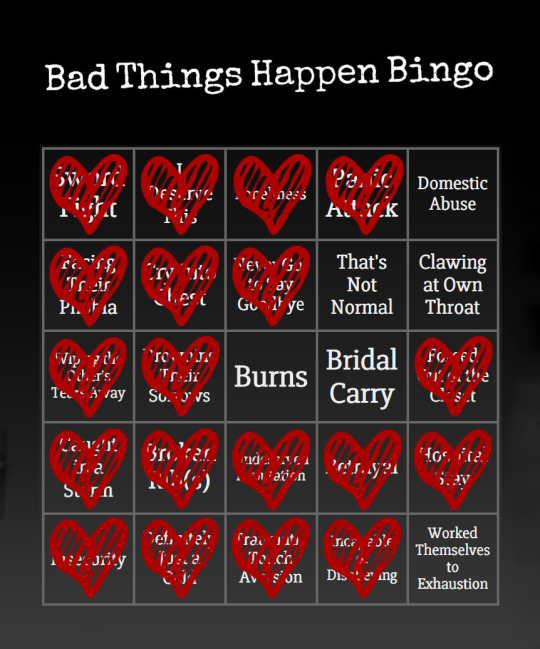
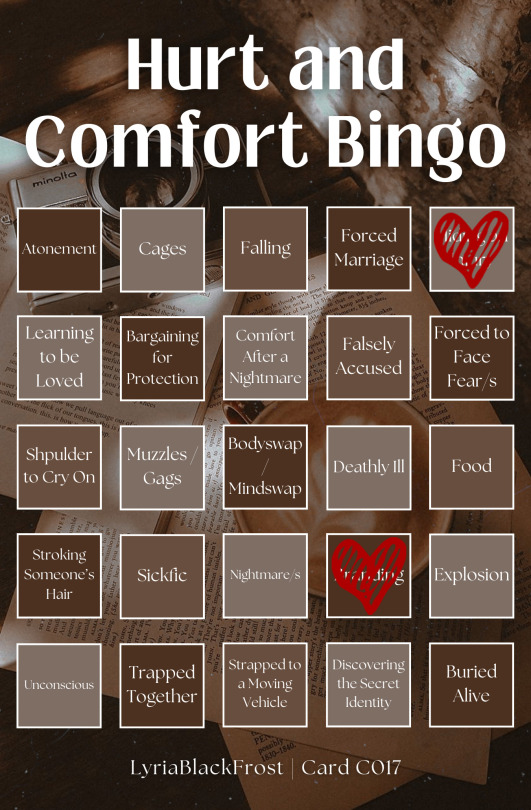
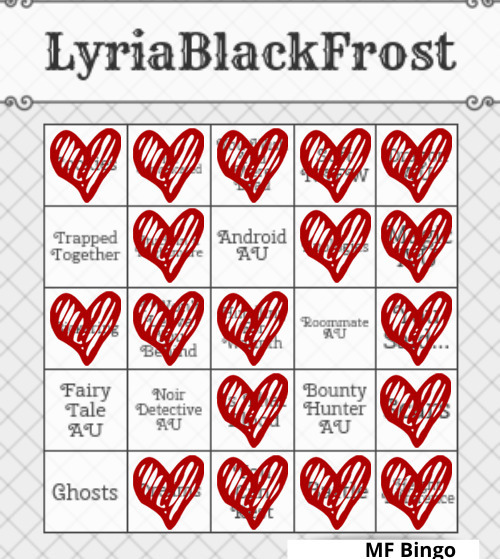
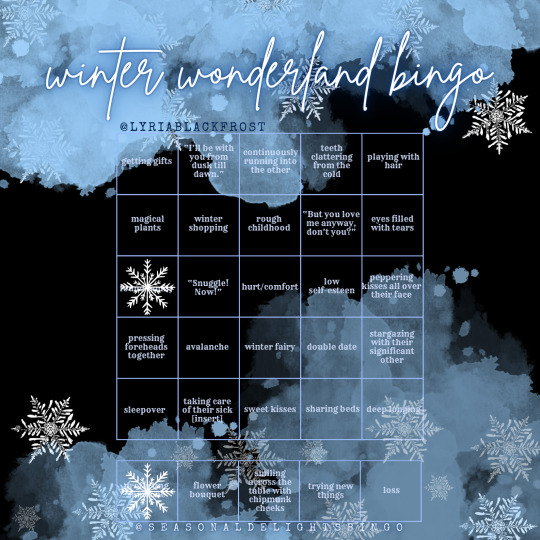
5 notes
·
View notes
Note
Wrt White woman brain (WWB): I'm non white largely raised surrounded by white ppl. Have embarrassingly had my own WWB moments/periods in life. I think that there is also an overlap of guilt and learned helplessness in this conversation that might not be picked up on for some folks. Not a excuse at all, but an insight into how a sense of helplessness and undressed trauma gets misdirected against people of color in many social situations. I think it's important for people to be aware of their traumas as to not perpetuate them, but WWB keeps people in a victim mindset even when they are doing ACTIVE harm. I also perceive this to be a motivator behind "white tears" as a defense mechanism.
Also as a non-white person there is an pretty big intersection of racial trauma that feeds into (and sadly sometimes invokes) the WWB phenom. As in, the need for people of color to escape into "whiteness" (respectability politics) can give us the impulse to shut down ideas, attitudes and situations that challenge a polite status-quo that is actually systemically violent.
Anyway, thank you for continuing this conversation. It gave me some stuff to think on and work through. I think it's important for those of us who want to the world to be a better place to criticize systems and structures like whiteness that we are often forced to participate in despite the harm it does us.
(For ppl interested in decolonization and mental health, I highly suggest starting with the invention of whiteness as a construct.) /end preaching to the choir
Thank you so much for your message! You've put it perfectly, I think -- WWB locks people into a victim mindset even while they're actively doing harm. And yeah, sadly, it's not just WW who do it! I think especially as the pressure toward assimilation and as class privilege ramp up for a person, their risk of falling into WWB increases.
Heartily seconding that people examine the social construction of whiteness. I've been hyping up this book a lot lately, but Nell Irvin Painter's "The History of White People" is such a fabulous introduction to how whiteness was invented and why. The first hundred pages or so is a great primer to start with. Hillbilly: A Cultural History of an American Icon by Anthony Harkins is also a great foray into the topic.
I also have found a lot of value in reading criticisms of white British culture. so much of it reflects all the toxicity of white America, just heightened and made even more obviously neurotic to my outsider's eyes that it helps me to better appreciate my own issues. Chavs: The Demonization of the Working Class by Owen Jones is a great one, and even some fiction like Never Let Me Go by Kazuo Ishiguro really helped me recognize some of the most avoidant and defensive behavior patterns in my own culture and family, even though it's ostensibly about British children in a boarding school.
88 notes
·
View notes
Text
The Question
“For certain questions, sometimes the best answer is no answer at all.” - The Question
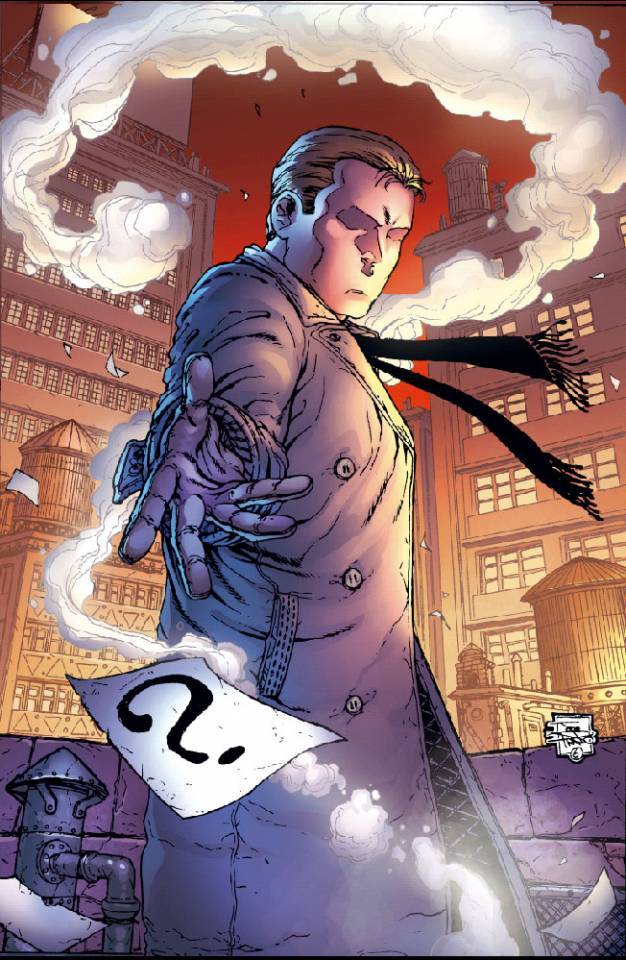
Real Name: Charles “Charlie” Victor Szasz
Aliases:
Vic Sage
Gender: Male
Height: 6′ 2″
Weight: 185 lbs (84 kg)
Eyes: Blue
Hair: Strawberry Blonde
Abilities:
Acrobatics
Disguise
Genius Level Intellect
Hand-to-Hand Combat (Advanced)
Indomitable Will
Interrogation
Intimidation
Investigation
Journalism
Dragon Style Kung Fu
Philosophy
Shamanism
Weaknesses:
Lung Cancer
Equipment:
Pseudoderm Mask
Universe: New Earth
Base of Operations:
Hub City
Chicago
Gotham City
Metropolis
Citizenship: American
Parents:
John Grayson; father
Mary Grayson; mother
Marital Status: Single
Occupation: Television Investigative Journalist
First Appearance: Blue Beetle Vol 6 #4 (September, 1986)
Appearance of Death: 52 #38 (March, 2007)
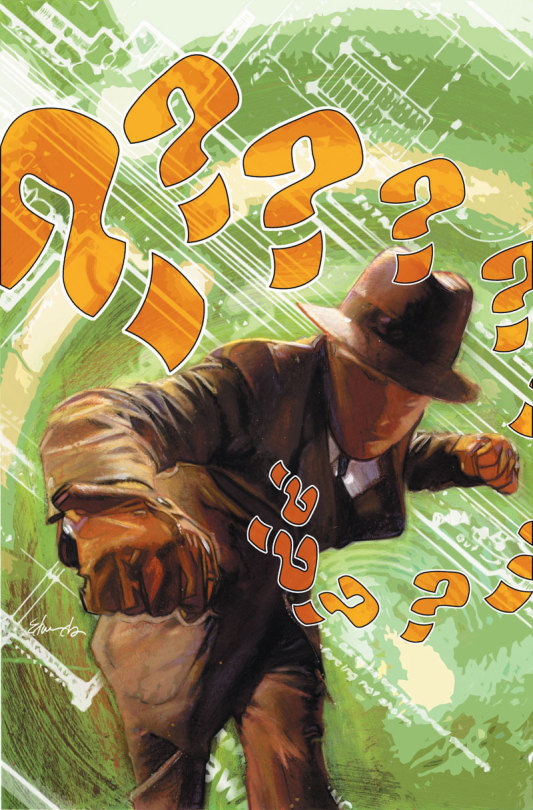
Abilities
Acrobatics: He has shown to be a proficient acrobat, and has used this skill to survive a fatal fall by rebounding off building sides and somersaulting to create more drag. He can get around by jumping from rooftop to rooftop.
Disguise: The Question has and can assume many aliases and has, as he describes, "many different faces".
Genius Level Intellect: The Question possesses genius intelligence and has an extremely unpredictable way of thinking. He can make a weapon out of common objects and often uses his mind to win fights.
Hand-to-Hand Combat (Advanced): Easily capable of incapacitating large groups of criminals and has knocked out trained policemen and soldiers with minimal effort. Vic has shown enough skill to take down two vicious attack-dogs and their highly-trained owner spontaneously, one after the other.
Indomitable Will: His training and lifestyle demanded much determination, and he was rarely known to give up or surrender especially in physical confrontations.
Interrogation: His opponents often fear him due to the rumors of his insanity and ruthless tactics.
Intimidation: He has on many occasions frightened criminals into giving him information he wants, and sometimes resorts to methods that many heroes shy from, like threatening a killer with a chainsaw.
Investigation: He has a superior inquisitive mind and has years of experience as an investigative reporter as well as his life as The Question.
Journalism: Victor was a TV investigative journalist. He had his own show and appeared on local news which sought out conspiracy theories, local crime rings and other violent or mysterious news. His Journalistic techniques were what drove him to become the Question.
Dragon Style Kung Fu: He was trained in Kung-Fu and had exceptional martial arts skills.
Philosophy: A self-proclaimed philosopher, Vic Sage has spent years surviving and understanding in the modern to postmodern world of big city life. He understands the functions of the people within the city and even the city itself on a deeper level.
Shamanism: The Question sought out to learn shamanistic techniques which applied to his city. He used these skills and techniques to "feel" the city and better understand it.

Weaknesses
Lung Cancer: Due to his smoking habit, Vic Sage developed terminal lung cancer, of which he eventually died.
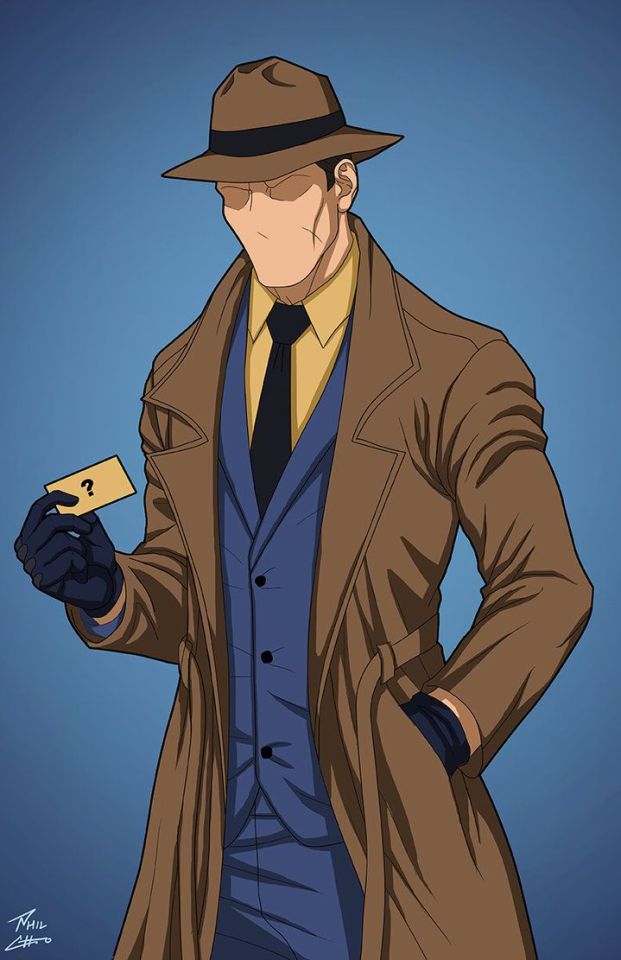
Equipment
Pseudoderm Mask

Origin
When Vic Sage, a television investigative journalist, encountered stories he couldn't investigate by normal, legal means, he donned a special mask that made it appear that he had no face. As the Question, Sage investigated corruption in the face of all danger, leaving a blank "calling card," which, when touched, emitted a smoky question mark.
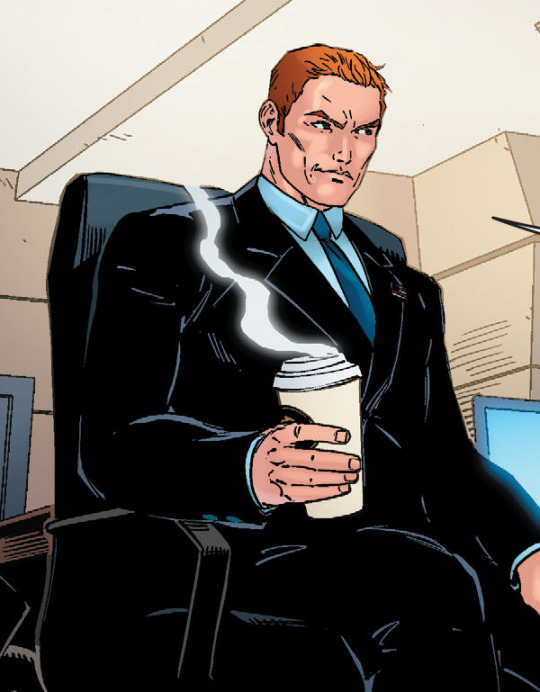
Childhood and Early Career
Victor Sage was born Charles Victor Szasz, and grew up an orphan who had a reputation as a troublemaker. Szasz prided himself in defiantly enduring the physical abuse of the Catholic orphanage where he was housed. Though he managed to get into college, higher learning did not mellow his violent tendencies. Some time during college, he brutally beat a drug dealer for giving him LSD, which had caused Sage to doubt his own senses under its influence.
After graduating from college, Sage made his mark as a highly outspoken and aggressive reporter with a reputation for obnoxiousness in Hub City. He then moved to television journalism, which eventually led him to investigate Dr. Arby Twain. This particular story would alter the course of Sage's life permanently.
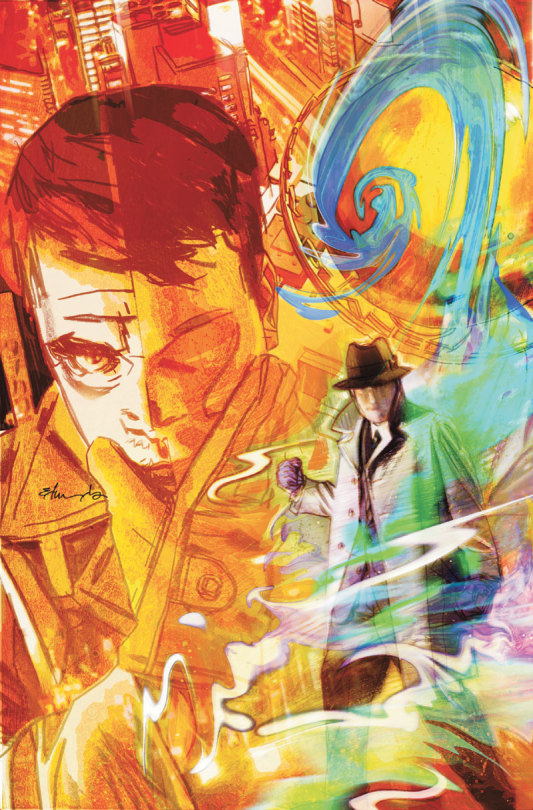
Birth of the Question
Sage was approached by his former professor, a scientist named Aristotle Rodor, who told Sage about an artificial skin called Pseudoderm, which Rodor had co-developed with Dr. Twain based on the notes of Gotham criminal Bart Magan and research into Gingold, the chemical responsible for the Elongated Man's powers.
Pseudoderm was intended to work as an applied skin-like bandage with the help of a bonding gas, but had an unforeseen toxicity which was fatal when applied to open wounds. Though Rodor and Twain agreed to abandon the project and parted ways, Professor Rodor later discovered that Dr. Twain planned to proceed with an illegal sale of the invention to Third World nations, despite the risk to human health.
Sage resolved to stop him but had no way of going after Dr. Twain without exposing himself. Rodor suggested that Sage use a mask made of Pseudoderm to cover his famous features. Disguised by the Pseudoderm mask and armed with information, Sage eventually caught up with Dr. Twain, stopped the transaction, and extracted a confession from him. He then left Twain bound in Pseudoderm in an ironic twist. On television, Vic Sage reported on Dr. Twain's illegal activities.
With his first venture a success, Sage decided that this new identity would be useful for future investigations. He continued to work with Professor Rodor, who supplied the Pseudoderm and eventually modified the bonding gas, giving it the ability to alter the color of Sage's hair and clothing, as well. Vic became good friends with "Tot," who became a mentor to him in both of his identities.
Shortly after debuting in Hub City, Vic Sage relocated to Chicago, IL in order to join the staff of WWB-TV as a crusading journalist. He would continue to operate as The Question there, and would make an ally of Chicago's other resident hero, the Blue Beetle. He would also travel to other cities in the course of his investigations, and eventually teamed up with Batman and briefly participated in the Crisis.
The Question's early crime fighting career was somewhat successful, but his black-and-white moral viewpoint and lack of commitment would soon lead to a turning point for both Sage and his alter ego.
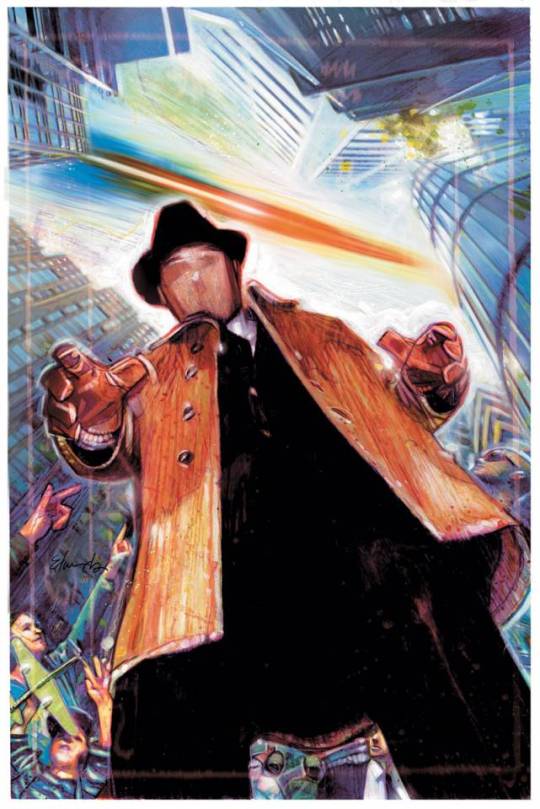
Near-Death Experience and Further Training
After his time in Chicago, Vic Sage returned to Hub City and KBEL television, where he worked alongside news anchor and occasional love-interest Myra Connelly. During a mission as The Question, he was badly beaten in personal combat by the mercenary and martial artist, Lady Shiva, and then nearly fatally beaten by her employer's thugs and shot in the head with a pellet gun. Though he was thrown in a river to drown, Shiva rescued him for reasons of her own and gave him directions to meet Richard Dragon as soon as he was recovered enough to get out of bed.
Following a vision of Batman while in his sickbed, Sage sought out the master martial artist, who retained all of his skill even while confined to a wheelchair. Sage spent a year learning martial arts and Eastern philosophy from Dragon. The training changed and deepened The Question's moral perspective, and the crimefighter became more understanding of the moral ambiguity of his chosen work.
Vic Sage returned to Hub City and resumed his career as The Question with a new, broader worldview, and a belief that crime had to be fought at more than one level.
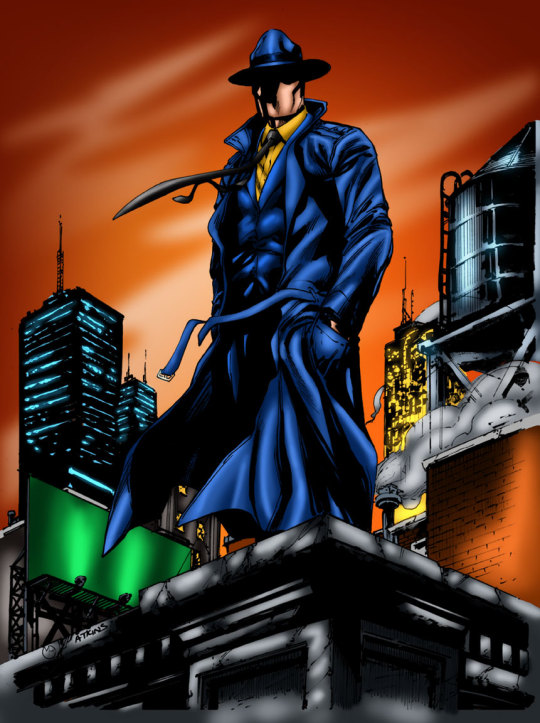
The New Question
Though The Question had originally established himself as a crime fighter by stopping street crime, his post-Dragon career found him attacking the systematic corruption of Hub City at its highest levels. Hub City was noted as being "synonymous with venality, corruption, and violence," and perhaps even outranked Gotham City as the most dismal city in the the United States.
The Question's work in defending the city extended beyond street crime and into the realm of politics and social justice. He re-enlisted as an ally his former girlfriend, Myra, who had married the corrupt, alcoholic mayor of Hub City, Wesley Fermin, in his absence. He also met Batman again and have the first of what would be many encounters with the Green Arrow.
After spending months running Hub City while her husband descended into mental illness, Myra Fermin announced her intention to run for mayor herself, and received Sage/The Question's full support. Though Myra's marriage to the mayor was loveless, she resisted the temptation to reunite with Sage, but she eventually gave into her temptation and had affairs with both Sage and The Question, whom she did not realize were the same man. When Myra lost the election by one vote, she was elected to the position anyway, as her challenger had died as a result of what was called "the worst tornado in history." However, during her victory speech, her husband, Wesley Fermin, shot her in the stomach for supporting what he called "Communist beliefs." Wesley was subsequently killed during a police stand-off, but Myra entered a coma, and Hub City was plunged further into chaos. For some time, the Question, became the city's only guarantor of justice, though Myra eventually awoke from her coma and assumed her role as mayor.
The gang warfare in the weeks following the election led Sage to a reunion with Lady Shiva, who at first resumed her adversarial relationship with The Question and then became an ally to him. Through Shiva, The Question was able to meet with the gang-leaders who were creating chaos in the city.
Although he had the support of Myra and his mentor, Tot Rodor, Sage/The Question often felt troubled about his role as the city's protector and as a fighter of crime. Reconciling his original, stark, mindset with the enlightenment he had received from Richard Dragon continued to be a source of conflict for The Question, who struggled to determine how far he should go in his pursuit of justice. With the help of his allies, The Question realized that a perverse part of him wanted to know what it felt like to take another person's life, and he managed to successfully defeat his temptation to kill.

Leaving Hub City
Though The Question did his best to contain the chaos around Hub City, he felt himself growing increasingly dark as time wore on. A hallucinogenic trip caused his subconscious, in the form of his mother, to tell him that he would never be able to lead a happy life unless he left Hub City. Richard Dragon echoed this viewpoint during a visit to Vic Sage, when he sensed that Sage was on the verge of a major turning point in his life. Lady Shiva soon after arrived by helicopter to spirit The Question, Rodor, and Myra Fermin away from the city, though she herself decided to embrace the Hub's chaos and remain there. Sage nearly convinced Myra to leave the city with him, but her sense of duty convinced her to remain. Before Sage left, Myra gave to him her only daughter, Jackie, and wandered back to the city alone to meet her duties as Mayor and do her best to stand for what she believed in.
Sage took Jackie with him to South America, hoping to rid himself of his "No Face" alter ego and find a land free of the clutter and corruption that filled Hub City. However, this sense of serenity did not last long. Sage was quickly drawn into a drug war which ultimately forced him to kill a man in order to save Jackie's life. The Question's philosophy from that point changed once again, as he realized that he had no guilt over the killing and would do it again if necessary. He would kill again.
Unfortunately, Jackie would die anyway, en route to her mother in Hub City.

Career after Hub City
After leaving Hub City, Victor Sage held a series of journalistic positions in various cities, while reviving his Question persona when necessary. Previous experiences teaming up with such heroes as Green Arrow and Batman had established the Question in the superheroic community, and he would participate in major events such as the Alien Invasion and Brainiac's attack on Metropolis. Following his abandonment of Hub City, The Question helped protect an Indian reservation alongside Green Arrow and John Butcher. He traveled the United States and would meet Steel and Azrael. He even very briefly became a member of a team, when he joined the L.A.W. alongside his old comrade Blue Beetle and Nightshade, Sarge Steel, Captain Atom, and Judomaster during a disappearance of the Justice League of America, in order to stop Judomaster's former sidekick, Tiger, from conquering the world. On that mission, the Question would also first learn of the mysterious land of Nanda Parbat. He would also return to Hub City several times, and eventually got a bittersweet shock when he learned that Myra had finally moved on.
Following the near-destruction of Gotham City after a major earthquake, the Question relocated to Gotham and teamed with the Huntress, with whom he had a short-lived affair.
After years of dabbling with hallucinogens, meditation, and his mask-activating gas, The Question developed a shamanic awareness, in which he was able to interpret coincidences and thus "talk to the city". In this state, he was also able to sense chi, or life force. He became able to "walk in two worlds" for an increased awareness of his surroundings and of any disturbances in a city's natural order. This ability came in handy when Sage relocated to Metropolis and teamed up with Superman against Lex Luthor and the Psychopomp.

Infinite Crisis
During the events of the Infinite Crisis the Secret Society of Super-Villains coordinate a planet wide breakout of super-villains from every major prison. With the JLA otherwise occupied Oracle with the help of the telepathy of the Martian Manhunter is able to organize a group of second string vigilantes to oppose the escapees at each prison. The Question joins up with these heroes and when they make their way to Metropolis he is transported with the other heroes to fight in what would become the Battle of Metropolis.
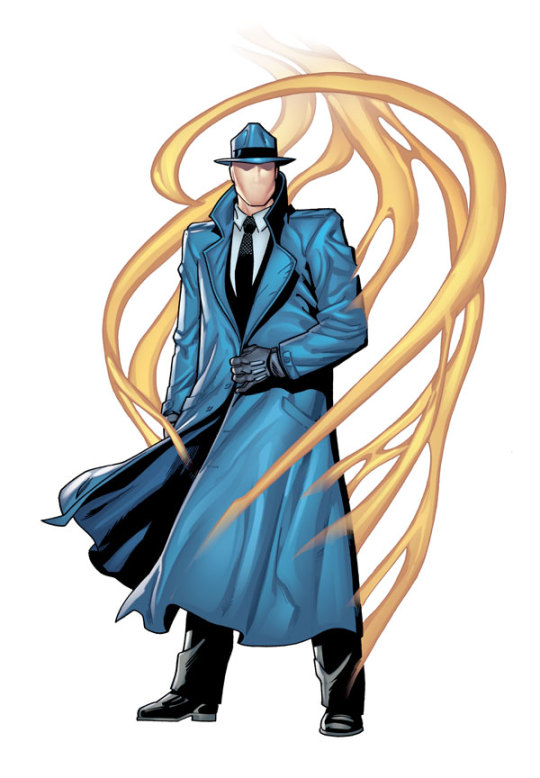
52
Following the events of the Infinite Crisis and Batman's disappearance, The Question returned to Gotham City to assume the role of its protector.
His first act was removing the bat symbol sticker from the Bat-Signal and spray-painting a giant question mark in its place. This was not strictly an act of ego, however- he shone the light on Renee Montoya's apartment building in order to get her attention. Three days later, he entered Montoya's apartment and left her an address: 520 Kane Street. When Montoya visited the location, he hired her to watch an abandoned building located there for "two hundred dollars a day, plus expenses," and implied that it would be used by a third party. This mysterious behavior would lead to a partnership that would last nearly a year.
Two weeks and one night later, the two teamed up against a strange creature who entered that building. The course of their investigations then led them to Kahndaq, where they investigated Intergang dealings and prevented a suicide bombing during Black Adam and Isis's wedding, an action that earned The Question the Order of the Crescent.
After returning to Gotham City, the Question learned that he was suffering from lung cancer. Though Montoya immediately had Sage hospitalized and later took it upon herself to transport him to the Himalayan city of Nanda Parbat in the hope of using its mystical properties to save him, she was too late. After suffering through great discomfort and hardship, Victor Sage, The Question, passed away.
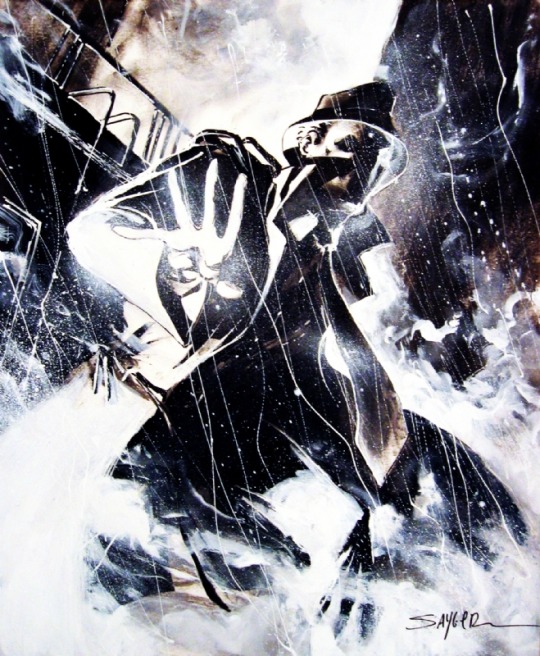
Blackest Night
During the Blackest Night crossover, Vic Sage is reanimated as a Black Lantern. He goes after Renee, Tot and Lady Shiva, who manage to elude him by suppressing their emotions, making them invisible to him.
The Question's legacy lives on, however: Renee Montoya has been seen wearing the mask and garb of the Question in Gotham City, and, on an alternate version of Earth, a version of Vic Sage lives on.
#the question#question#charles charlie victor szasz#charles victor szasz#charlie victor szasz#charlie szasz#charles szasz#vic sage#l.a.w.#law#l.a.w#jla#justice league of america#Black Lantern Corps#dc#DC comics#thedcdunce#Living Assault Weapons
153 notes
·
View notes
Text
Stay Tuned for Danger
I’m back at it again! This week we’ve got Nancy Drew Number Two. Stay Tuned for Danger takes place in New York, so I got myself a pizza (spinach & feta with mushrooms, Brooklyn style, ayy) I also got a box of chocolates due to a certain poisoned snack package Rick Arlen receives. Finally, because idk I associate soap operas with tinsel and glamor I got a nice sparkling non-alcholic rose. I don’t really drink when I play these games because I find them headpoundingly challenging even when I’m stone cold sober.

Anywho, ACTION! :p
2. Stay Tuned for Danger
Yes, I’m ranking this game a solid 5/10. That may change as I play more games and have more to compare it to BUT—even though that really sounds very low I’d like to preface that I did find this game pleasant. I liked it a helluva lot better than Secrets Can Kill, anyway.
Let’s start with the bad this time. As others have said, the game is temperamental. Narrative progression rests on your responsibility to click on every. single. thing. It’s moreso an issue because the game regularly presents you with spreads of items all stacked on one another, with no indication that you are supposed to gingerly comb your curser over every last bit of the screen so you can get a glimpse of all nineteen of Lillian’s anger management notes. I swear I had to sneak back into Dwayne Powers’ office at least seven times because I’d forgotten to click on the fortune cookie and the French love letter dictionary (lol what) and god knows how many inane newspapers. In the walkthrough I had to use, one of the instructions actually said to carefully click on a piece of paper because it was so well concealed, and you know what? It took me three tries to successfully click it.
Similar to the previous game in the series, STFD sometimes suffers from frustrating level design and controls. Nancy has not yet leveled up her ability to turn a complete 360 degrees, so you’re gonna spend a lot of your sleuthing walking backwards down hallways and stairs. If you want to turn left at the casting director’s door, sorry bucko. You’re gonna have to spin right allll the way around.
However, there are good things here! We have a brilliantly dotty cast of fun and fresh characters. Bless Millie Strathorn—I hope someday I too can spend my days holed up in a closet full of actual garbage writing bad fanfiction and writing secret coded messages to…myself? Haven’t we all left office at the end of the day and thought, “Maybe I should take the fucking doorknob off to make sure nobody goes snooping through my things?”
The mystery itself rests on some real rising tension. The game starts with barbie humanoid Mattie Jensen casually describing some toxic fan letters her costar has been getting, and things ramp up until Nancy is later breaking into buildings and disarming bombs. The setting of WWB has a personality to it, rather than just being some generic tv studio. The bits with the voiceover taxi drivers could’ve maybe used some variety (and also yikes! at that wAcKy Indian driver voice), but the bit didn’t get annoying in the way you’d expect. Hearing some imposter voicing your boyfriend was a bit jarring, but the phone conversations are a step up from the previous game.
There’s a lot to like here. I feel like if you’ve already played it and know the gist with the puzzles and progression, it would be a cozy little play. I would replay this—and I have really pretty much zero interest in replaying SCK ever again, so that’s something.
5/10 if you’ve never played it, I’d wholeheartedly recommend ❤️
#Nancy drew#nancy drew games#stay tuned#stay tuned for danger#stfd#soap operas#mystery#rick arlen#mattie jensen#Lillian weiss#Millie strathorn#theme nights#themed dinner#themed meal#detective#teen sleuth#her interactive#her
9 notes
·
View notes
Photo
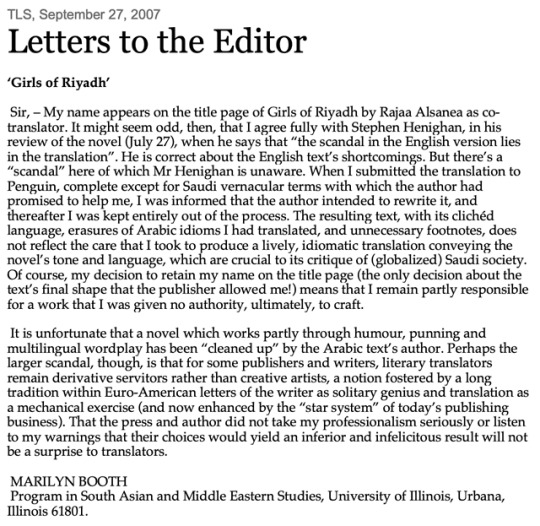
Following our recent posting of Salwa Benaissa’s interview with Mona Kareem on WWB Daily, we’ve had some interesting conversations and done a little more research—more on that soon. In the meantime, Marilyn Booth’s letter to the editor of the TLS back in September 2007 re. Girls of Riyadh is worth a read; note that Booth also shared first prize in this year's International Man Booker with author Jokha Alharthi—see this article in The Guardian. Twelve years since that unfortunate experience with Penguin, we’re glad she’s kept on keeping on. Booth is obviously a stellar translator, and we applaud her tenacity and articulate correction of the record when it comes to the many challenges literature in translation presents even (especially) when literary critics make the effort to cover it.
3 notes
·
View notes
Text
Part 3: Nancy Drew & The Vanishing Set Designer
The Importance of Cohesive, Believable Game Worlds
A wall of text series on how Nancy Drew games largely lost their charm--this time with pictures!
Boasting more than 30 titles released over the course of nearly 20 years, it’s obvious why the Nancy Drew series has experienced changes in graphics. Thanks to never-ending advancements in PCs and artists who continue to hone their craft, the games moved ever closer to an ultra-realistic ideal.
Improved textures and dynamic character animations were some of the most noticeable and appreciated changes that helped to further immerse the player and create a beautiful game world. That said, a convincing game world does not require the latest and greatest graphics--it only requires cohesion. The most realistic graphics in the world are nothing without a skillful designer behind the scenes, setting the stage and making everything feel “right.” Unfortunately, that designer seemed to vanish with increasing regularity as time went on.
Empty Spaces
HER has never had a AAA budget, and that comes with certain limitations. One of the most obvious is the amount of characters that Nancy is able to interact with in each game. Since creating, animating, and voicing characters takes quite a bit of time, there are rarely more than five. This can create some challenges when it comes to creating a game world which feels lively and believable.
Some locations, like the abandoned Thornton Hall or the soon-to-be B&B in Message in a Haunted Mansion need no excuse for their limited cast, but others require a bit of explaining.
Sometimes, a story-driven explanation is given for how sparsely populated a location is. For example, in Secret of the Scarlet Hand, the museum is currently closed to visitors, just like the park in The Haunted Carousel. But other times, a few tricks are needed to seal the deal--and not every game had some up its sleeve.
The Good:
Danger on Deception Island did a good job of making the Hot Kettle Cafe, an otherwise sparsely occupied establishment, feel as if a group of bustling customers were just out of view through the use of sound effects.

Dishes are clinking, people are chatting and laughing, but only Holt and Jenna are ever seen. Yet, the simple addition of those sound effects and a little sign saying the other part of the cafe was occupied helped the player suspend their disbelief.
Perhaps even more impressive, Danger by Design managed to make a public park feel fairly believable through the use of cleverly obscured vendors, street and nature noises, a pesky squirrel, and a suspect visiting at one point.
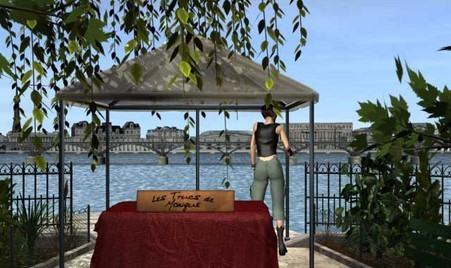
This location, coupled with the choice to have Nancy immediately appear behind the parfait counter at Cafe Kiki against the sound of chatting customers, allows the game developers to avoid making Paris feel underpopulated even though there are only a handful of NPCs.
The Bad:
Unfortunately, The Phantom of Venice did not succeed in presenting Venice as well as DAN presented Paris. Though the Ca’ itself was beautiful and the musical score was, as usual, wonderful, the vast majority of the locations felt completely and utterly dead.

No amount of heels clicking on the pavement, people occasionally shouting Italian phrases, or flocks of pigeons landing briefly was going to make these locations--which are visited many times throughout the game--feel real.
The game designers chose to set many of the clickable buildings further back, revealing large swathes of empty streets and public squares, rather than having Nancy appear at the front door like she does in many other games.
While I can see they were clearly trying to showcase the unique architecture of Venice, it simply results in a mostly “off” feeling game world since one would expect lots of people to be roaming around.
The Silent Spy--with its basically empty train station--and Shadow at the Water’s Edge--with its barren urban environments--suffer from this problem as well, along with the game I love to hate: The Shattered Medallion.
Even though MED makes a ridiculous attempt at explaining why Sonny Joon is the only member of staff present and conveniently gets rid of the vast majority of the competitors within the first act of the game, it still utterly fails at making the player feel as if they are participating in a game show. Frankly, with the constraints put upon HER by their budget and game engine, I simply cannot imagine how they could have successfully pulled off an authentic game show experience, but the lack of competing teams was far from the only issue with MED.
The Great Outdoors
The trouble with any game world is that there almost always must be a boundary--a limit to where the player can go. Except for games that feature randomly generated locations, players can expect to--sometimes literally--hit a wall at some point. The trick is to make it seem as if there is no wall.
Outdoor locations can make pulling off such a feat difficult, because as the depth of field is increases, more and more objects are required to fill all that space. However, it is by no means impossible, and HER has marvelously pulled it off many times.
The Good:
Ghost Dogs of Moon Lake was the first game to truly offer an outdoor experience. While previous games like Treasure in the Royal Tower and Secret of the Scarlet Hand had walled gardens, DOG gave the player an expansive forest to explore during the day and night.

This game succeeds at giving the player a sense of actually being deep within a dense forest by using layers upon layers of 3D trees. No matter where you look inside the thicket, you never seem to see a “wall.”
Not only that, but allowing the player to wander in the woods rather than having every location be accessible by a jump map--like the motor boat map--makes the game world feel very large, though some players may find backtracking to be annoying over time.
Another contribution to that sense of realism, much like the Hot Kettle trick, is the use of environmental sounds and critters. Songbirds singing in the trees, the famous chirping worms of Pennsylvania, and other woodland noises play almost constantly in the background as Nancy’s feet crunch upon earth and fallen leaves.
The DOG designers also used a limited, cohesive color palette of muted, earthy tones not only in the forest but also throughout the cabin, speakeasy, and ranger station.
The result? A game which, though it may not rival the likes of Skyrim in detail or variety, feels thoroughly cohesive and drips with atmosphere.
Similar success--though on a smaller scale--was achieved by the forest in The Captive Curse, which was full of sounds, had misty depth of field and gave the player a true sense of being lost in a dark, potentially sinister place.

The Bad:
The Shattered Medallion, on the other hand, is one of the worst offenders of a poorly designed outdoor world. Given that this game was almost entirely set outside, HER certainly had a challenge on their hands, but they failed miserably.
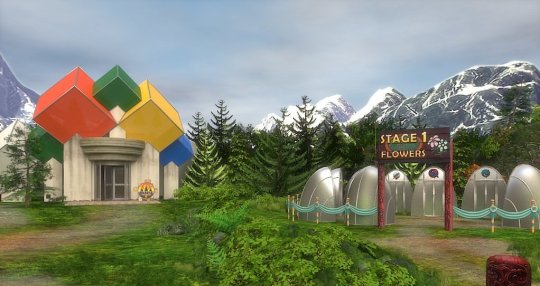
Contrast this forest scene with the one from DOG or CAP. Those trees are almost definitely 2D photographs pasted in a row, allowing for almost no depth of field, and it’s the same story for the mountains.
Using 2D assets is not necessarily a no-no, but here they make the actual 3D models--the silver flower stations and the puzzle palace--look wildly out of place.

The same thing is happening in this other half-ass location from MED. A strange collage of photographs with a few oddly lit 3D models pasted on top makes for a very “wrong” feeling scene.
Indeed, almost every outdoor location in MED has this very weird feeling of being on a Hollywood set--like the backdrops could fall down at any moment and reveal the whole thing to be a farce--and it’s made only worse by the almost complete lack of background noise. Admittedly, I have never been to New Zealand--perhaps it really is deathly quiet--but this game could have greatly benefited from some consistent sounds of nature to liven-up its otherwise lifeless locations.
On top of all that, this game seems to have no color scheme of which to speak nor does it feel expansive. A jump map is used extensively for traversing the landscape, with many outdoor locations only allowing the player to take a mere handful of steps in any given direction.
The result? A game which simply feels “wrong” in nearly every conceivable way.
By no means is MED the only offender, though. Similar depth of field issues--though not as egregious--were present in Secret of the Old Clock, and as far as cohesion goes, I think we should all take a moment of silence for this travesty:
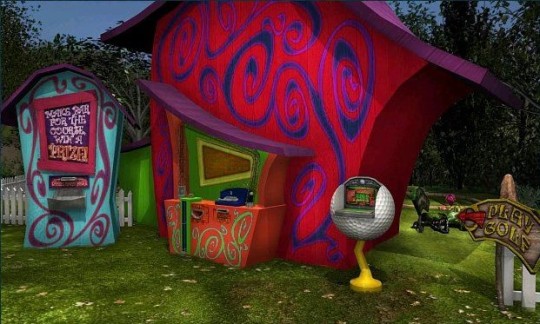
All I can say is, whoever approved that design was just...wrong.
The Jump Map
Jump maps can be great time-savers when going back and forth is a key gameplay element, and the Nancy Drew games certainly involve a lot of back and forth. Sometimes they save a player a lot of headache, but sometimes they break immersion--particularly when they attempt to stand in as a cheap substitute for an expansive, believable game world.
The Good:
Danger on Deception Island is one of many games which features a jump map for key locations.
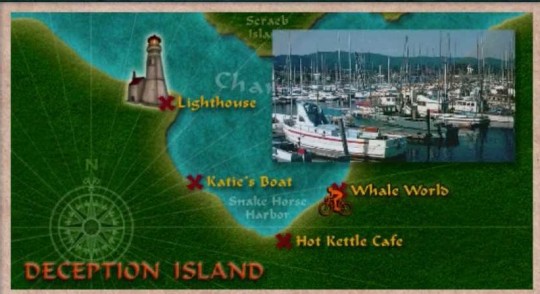
What makes this map work is simple: each location is fairly large and immersive in its own right, and there is presumably little to be gained by forcing the player to click one million times down the actual road to each place.
That said, while the player may jump from the lighthouse to the Hot Kettle with the click of a button, copious amounts of kayaking, exploring beaches and the enormous tunnel system keep the game from seeming too constrained. The player feels as if they really have explored Deception Island, rather than feeling as if they have simply visited a few buildings.
The jump map in DOG, SSH, STFD and various other titles work for the same reasons--the forest, Beech Hill museum, and WWB studio respectively seem so large that jumping around to smaller, more limited locations doesn’t actually feel very limiting at all. Plus, the art style used for the map can often add to the immersion, like the subway and train maps.
The Bad:
Though its map certainly looks plausibly like an amusement park flyer, The Haunted Carousel was the first game with a jump map that truly felt like a limitation.

Though there are double the “clickable” locations on CAR’s map in comparison to DDI’s, there simply isn’t much to explore in CAR’s locations. Indeed, the park feels very tiny, and I can’t say I truly felt like I “saw” Captain’s Cove. Perhaps if even one location had allowed for more open exploration, the game wouldn’t have felt so limited.
In the same way that mini-games and repetitive tasks can serve to artificially lengthen or beef up a game, jump maps can attempt to artificially expand a game world. Sadly, there are even more cheap tricks deployed in service of this goal.
Third Person Perspective
Secret of the Old Clock was the first game to transform the jump map into a driving simulator, and this mechanic was met with mixed reception--it seemed like players either loved it or hated it for various reasons. Regardless of opinion, this game mechanic always introduces a risk: the style of the game changes.
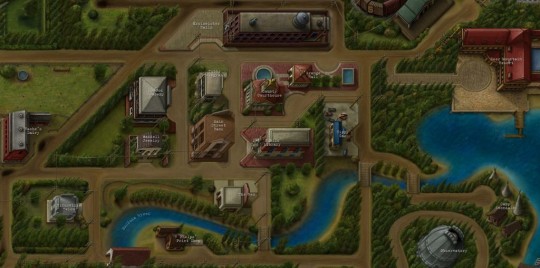
No longer is the player immersed in a first-person, beautifully rendered 3D world--they are now dropped into third-person on a stylized, top-down map. The effect is simple: the player is very aware they are playing a video game.
The Creature of Kapu Cave, The White Wolf of Icicle Creek, The Phantom of Venice, and The Haunting of Castle Malloy all featured variations of this third-person mechanic, and many games afterwards incorporated some form of the driving simulator to varying degrees of success, but Ransom of the Seven Ships went absolutely wild with it all.

From sailing around, to scuba diving, to rock climbing, to digging holes, to driving the golf cart around the island--the player was constantly yanked from the first-person, 3D-rendered game world and thrust into what were essentially 2D mini-games. While the color scheme was consistent, the art style varied greatly, making the game feel much less cohesive than many of its counterparts.
While RAN certainly felt like a very large game in terms of terrain--complete with copious amounts of agonizing back-tracking--it really lacked immersion. Indeed, there is no real sense of urgency like that in The Final Scene--despite it being Bess who has been kidnapped--and the focus is constantly taken off of the mystery at hand and onto figuring out how to drive correctly or sail that godforsaken boat.
A Matter of Preference
Ultimately, I think the Nancy Drew games evolved along something of a sliding scale. In the beginning, the aim was to put the player into Nancy Drew’s shoes, but this aim slowly and steadily shifted towards that of simply creating a game. And the truth is, there is nothing wrong with either aim; it’s all about what experience you’re looking to have.
When I first started playing the Nancy Drew series, I was looking for a mystery-solving simulator and I couldn’t get enough. I’ve played a lot of other detective games, but the ND games were really something special, so when they stopped delivering the same type of product, I really felt like something great had been lost.
Again, there is nothing wrong with game-y games, but there is something to be said about games that try to provide an authentic experience. It’s not every day that an ordinary person gets to solve a mystery--a mystery that seems so plausible that you feel a real sense of accomplishment when you unravel all its threads.
I missed that in so many of the later games, and I think that’s a shame.
Read Part 1: Nancy Drew & The Curse of the Pointless Task & Part 2: Nancy Drew & The Case of the Missing Realism
68 notes
·
View notes
Text
JOY ... in Words Without Borders, A Reading Challenge for 2019
JOY … in Words Without Borders, A Reading Challenge for 2019
“A reader lives a thousand lives before he dies, said Jojen. The man who never reads lives only one.” A Dance with Dragons (A Song of Ice and Fire), George R.R. Martin
The Poet by Day, Wednesday Writing Prompt will return on January 16. Meanwhile, here is a reading challenge for 2019.
The very title of Words Without Borders (WWB) suggests an exciting and elegant theme for 2019 reading, for…
View On WordPress
1 note
·
View note
Photo

WWB is gearing up to answer the call for more sustainable practices, to let go of convenience and embrace the challenge of blazing a new trail in this ever changing world. . . While our current plastic packaging is all recyclable, we recognize the need to renew, reuse and reduce our footprint much more then just "wasting responsibly".🌿 . . Every product in our inclusive line will soon be plastic free, featuring super sleek all renewable and easily reusable packaging without the bulky extra baggage 📦. No worries loves, we aren't gonna sacrifice any of our products to this transition and most all of your faves will still be available in as many versatile options they are now. We can't wait to show you what we are working on! . . I'll be updating my inventory this week of all products in "last run" packaging, so keep you eyes out in the next week or two for a massive sales! . . #answerthecall #conscious #sustainable #sustainablebeauty #ecowarrior #dotherightthing #rightsideofhistory #newdesign #newvibe #betterfuture #organic #earthbased #handmade #cosmetics #bodypaint #makeup #ecopackaging #wisewarriorbotanicals #wisechoice #blacklivesmatter #blackownedbusinessesmatter #leadtheway https://www.instagram.com/p/CDrzrMEAZ48/?igshid=117olj1864dd3
#answerthecall#conscious#sustainable#sustainablebeauty#ecowarrior#dotherightthing#rightsideofhistory#newdesign#newvibe#betterfuture#organic#earthbased#handmade#cosmetics#bodypaint#makeup#ecopackaging#wisewarriorbotanicals#wisechoice#blacklivesmatter#blackownedbusinessesmatter#leadtheway
0 notes
Photo

Illustration Photo: Mobile money clients, Farzana (left) and Nilima (right), outside an Access to information Center, Rajabari, Bangladesh (credits: UNSGSA/Ismael Ferdous / Flickr Creative Commons Attribution-NonCommercial-NoDerivs 2.0 Generic (CC BY-NC-ND 2.0))
FinTech Challenge - Innovations providing unbanked and underserved women with access to Financial Services
1 billion women around the world do not have access to financial services, and there is a 9% gender gap in financial access across emerging markets. Furthermore, women are particularly vulnerable to global health and economic shocks, increasing the need to support their resilience and recovery in these challenge times. Women’s World Banking wants to identify FinTech innovations providing unbanked and underserved women with access financial services in order to build their security and prosperity in the face of these global economic uncertainties.
FinTechs must submit solutions in either of one of two categories:
Build Security and Resiliency How might we enable unbanked and underserved women to build resilience through convenient, secure, and reliable access to safety nets (i.e. funds for emergencies) to help mitigate against global shocks?
Build Economic Prosperity How might we enable unbanked and underserved women to expand their income-generating activities to build their business and household income and support economic recovery after global shocks?
2 Grand Prize Winners Receive Compete as a finalist in the Monetary Authority of Singapore’s (MAS) Global FinTech Hackcelerator (powered by KPMG Digital Village) during the Singapore FinTech Festival in November 2020, and be fast-tracked to receive a MAS Proof-of-Concept Grant up to $S200,000. The top three winners of the MAS Global FinTech Hackcelerator will also get an additional S$50,000 Cash Prize. Tuition coverage for a pair of leaders (senior executive (male or female) and high potential woman leader) to participate in the next Leadership and Diversity for Innovation Program
Finalists Receive Invitation to present at Women’s World Banking’s virtual Making Finance Work for Women Summit in October 2020, which convenes leaders from the financial services, investor, philanthropy, policy and technology communities. Connection to potential investors (including WWB Asset Management). One year complimentary membership into Women’s World Banking’s Global Network.
Eligibility Startup FinTechs based anywhere that are leveraging technology to provide financial services for unbanked and underserved women in emerging markets. Solutions do not need to be exclusively for unbanked and underserved women but must show deliberate intent to be inclusive of reaching the segment.
Applicants can be pre-revenue but must demonstrate a viable value proposition to reach unbanked and underserved women.
Solutions should focus on building women’s security or prosperity, particularly in supporting resilience and recovery from global economic shocks.
FinTechs should also demonstrate a commitment to developing women leaders through the presence of women in their senior management team and Board of Directors.
Application Deadline: June 15, 2020
Check more https://adalidda.com/posts/kHrDD7c6Cvv4fDhCv/fintech-challenge-innovations-providing-unbanked-and
0 notes
Text
Title: To Mourn the Living Fandom: Persona 5 Ship: Yusuke/Ryuji Warnings: Verbal abuse, homophobia, past child abuse, past domestic violence Words: 2942 Synopsis: Yusuke notices something strange about Ryuji’s behavior that day. When they finally get to talk about it, however, he is surprised to hear that Ryuji’s father contacted him, and wants them to meet.
Prompts used: @badthingshappenbingo - Domestic Abuse @hurtcomfort-bingo - Shoulder to Cry On @seasonaldelightsbingo - Rough Childhood + Low Self-esteem
My cards under the cut.
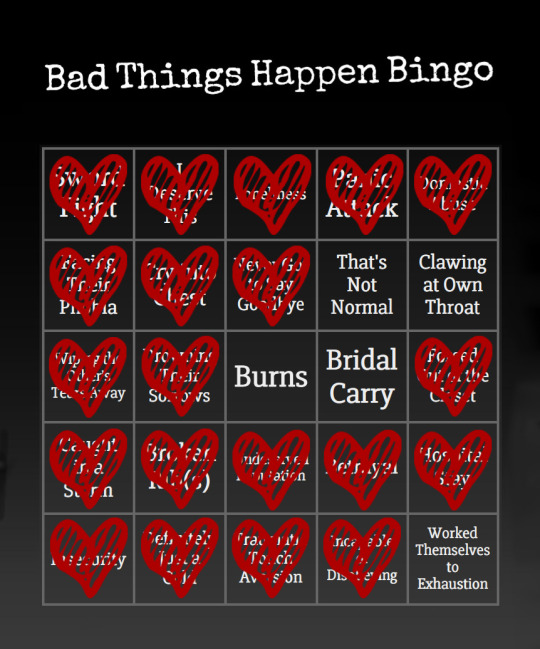
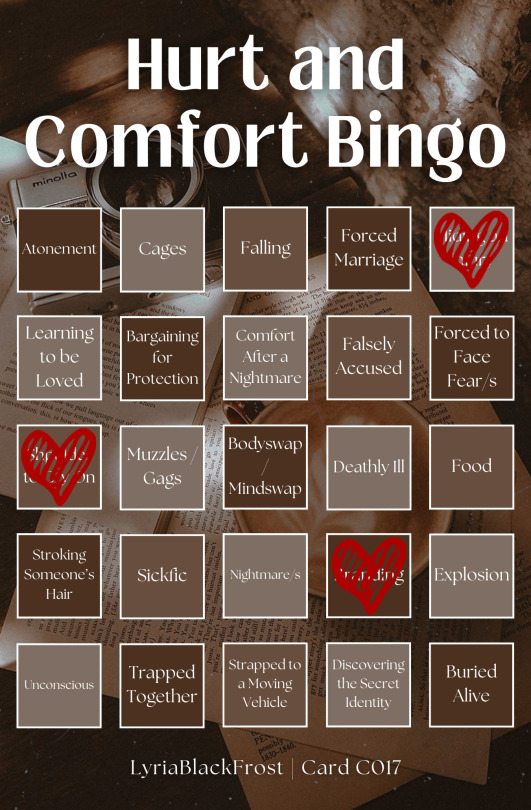
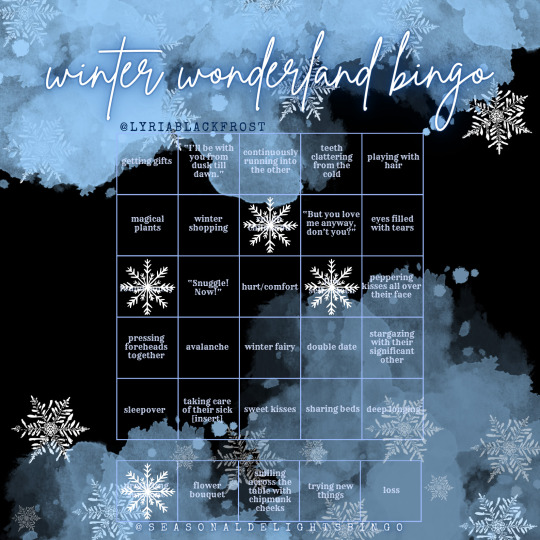
5 notes
·
View notes
Text
MICROCAPITAL BRIEF: WWB, Gates Foundation Issue FinTech Innovation Challenge to Promote ... Click here for articles June 27, 2019 at 05:48AM
0 notes
Text
Bird Incubators for Sale - Assessing International Bird Incubators Market Share Trends
Bird Incubators for Sale - Assessing International Bird Incubators Market Share Trends
Bird Incubators have a tough time competing with other animal products in the consumer market. They are not able to sustain their growth due to minimal marketing and public relations budgets. Bird Incubators must rely on promotional campaigns that are often too expensive for smaller organizations. Bird Incubators must also fight to retain existing customers as they move from bird feeders to bird houses to nesting boxes to aviaries.
Bird Incubators Market player forecast is determined by analyzing the growth factors for each of the four segments of the Bird Incubators Market: Residential / Commercial use, which include both institutional and public school fundraising programs, Bird Incubators for Manufacturers, which includes manufacturers developing Bird Incubators for sale; and the sub-segmented Green Roofs and LEEDs (Leadership in Energy and Environmental Design) Incubator programs. The market research team projects, the Bird Incubators sales volume will increase substantially from XXX in 2021 to XXX plus one from 2021 to XL in 2021, at an expected CAGR of X. The current base year considered for this study is 2021, and the forecast for the sales volume is based on a slow but steady increase in the number of birds bred to produce eggs and young chicks, as well as increasing the number of birds released into the wild. A slower but steady increase in the number of birds being rehabilitated after being rescued and returned to the wild is also expected. On an annual basis, the total number of birds adopted into shelters and taken for captivity is also expected to increase. The demand for rehabilitated birds will also be increasing over time.
Based on this study, we can determine the following Bird Incubators for sale forecast; however, these are only assumptions and there could be many other factors contributing to these key trends. As with any business forecast, these cannot be guaranteed although they are based on strong likelihoods. This is not to say that these trends cannot occur or are beyond your control, it's simply a reflection of where the market is at the moment. A general rule of thumb would be to expect the market to increase slightly between now and 2021.
There is currently four Bird Incubators for sale with the highest projected sale values and future sales growth in the hybrid segment. This would include the Parrot PV System, Parrot Pro Series, Parrot PV Plus and the Parrot WWB series. Each of these offer an array of features and benefits to potential buyers.
The first two segments presented have large potential for future growth and therefore should see increases in sales and market share over the next few years. The PV System by Bird Technologies, Inc. has received recognition and is a highly respected brand in the green housing industry. This PV System offers a number of options, including compact fluorescent modules (CPM), and can be used in both passive and active applications. The PV modules have received rave reviews from consumers and industry professionals alike and have created a lot of excitement around the brand.
The third segment, the Parrot WWB series by Bird Incubators, Inc., has received much less attention and is actually a quite niche product within the Bird Incubators family. Bird Incubators products tend to have higher perceived value and are highly regarded within the green housing industry. The WWB series is focused upon providing in-depth and specific Bird watching and breeding information for customers and provides a great deal of educational material as well. Swot analysis provides detailed trends and analysis to help you determine your current market position and provide you with strategies for future growth.
The research team projects that the Bird Incubators market size will grow from XXX in 2020 to XXX by 2027, at an estimated CAGR of XX. The base year considered for the study is 2020, and the market size is projected from 2020 to 2027.
The prime objective of this report is to help the user understand the market in terms of its definition, segmentation, market potential, influential trends, and the challenges that the market is facing with 10 major regions and 50 major countries. Deep researches and analysis were done during the preparation of the report. The readers will find this report very helpful in understanding the market in depth. The data and the information regarding the market are taken from reliable sources such as websites, annual reports of the companies, journals, and others and were checked and validated by the industry experts. The facts and data are represented in the report using diagrams, graphs, pie charts, and other pictorial representations. This enhances the visual representation and also helps in understanding the facts much better.
By Market Players: GQF Manufacturing Company Grumbach Incubator Warehouse RCOM INCUBATORS Brinsea
By Type Semi-automatic Bird Incubator Automatic Bird Incubator
By Application Household Commercial Use Laboratory Use Other
By Regions/Countries: North America United States Canada Mexico
East Asia China Japan South Korea
Europe Germany United Kingdom France Italy Russia Spain Netherlands Switzerland Poland
South Asia India Pakistan Bangladesh
Southeast Asia Indonesia Thailand Singapore Malaysia Philippines Vietnam Myanmar
Middle East Turkey Saudi Arabia Iran United Arab Emirates Israel Iraq Qatar Kuwait Oman
Africa Nigeria South Africa Egypt Algeria Morocoo
Oceania Australia New Zealand
South America Brazil Argentina Colombia Chile Venezuela Peru Puerto Rico Ecuador
Rest of the World Kazakhstan
Points Covered in The Report The points that are discussed within the report are the major market players that are involved in the market such as market players, raw material suppliers, equipment suppliers, end users, traders, distributors and etc. The complete profile of the companies is mentioned. And the capacity, production, price, revenue, cost, gross, gross margin, sales volume, sales revenue, consumption, growth rate, import, export, supply, future strategies, and the technological developments that they are making are also included within the report. This report analyzed 12 years data history and forecast. The growth factors of the market is discussed in detail wherein the different end users of the market are explained in detail. Data and information by market player, by region, by type, by application and etc, and custom research can be added according to specific requirements. The report contains the SWOT analysis of the market. Finally, the report contains the conclusion part where the opinions of the industrial experts are included.
Key Reasons to Purchase To gain insightful analyses of the market and have comprehensive understanding of the global market and its commercial landscape. Assess the production processes, major issues, and solutions to mitigate the development risk. To understand the most affecting driving and restraining forces in the market and its impact in the global market. Learn about the market strategies that are being adopted by leading respective organizations. To understand the future outlook and prospects for the market. Besides the standard structure reports, we also provide custom research according to specific requirements.
The report focuses on Global, Top 10 Regions and Top 50 Countries Market Size of Bird Incubators 2016-2021, and development forecast 2022-2027 including industries, major players/suppliers worldwide and market share by regions, with company and product introduction, position in the market including their market status and development trend by types and applications which will provide its price and profit status, and marketing status & market growth drivers and challenges, with base year as 2020.
Key Indicators Analysed Market Players & Competitor Analysis: The report covers the key players of the industry including Company Profile, Product Specifications, Production Capacity/Sales, Revenue, Price and Gross Margin 2016-2021 & Sales by Product Types. Global and Regional Market Analysis: The report includes Global & Regional market status and outlook 2022-2027. Further the report provides break down details about each region & countries covered in the report. Identifying its production, consumption, import & export, sales volume & revenue forecast. Market Analysis by Product Type: The report covers majority Product Types in the Bird Incubators Industry, including its product specifcations by each key player, volume, sales by Volume and Value (M USD). Markat Analysis by Application Type: Based on the Bird Incubators Industry and its applications, the market is further sub-segmented into several major Application of its industry. It provides you with the market size, CAGR & forecast by each industry applications. Market Trends: Market key trends which include Increased Competition and Continuous Innovations. Opportunities and Drivers: Identifying the Growing Demands and New Technology Porters Five Force Analysis: The report will provide with the state of competition in industry depending on five basic forces: threat of new entrants, bargaining power of suppliers, bargaining power of buyers, threat of substitute products or services, and existing industry rivalry.
COVID-19 Impact Report covers Impact of Coronavirus COVID-19: Since the COVID-19 virus outbreak in December 2019, the disease has spread to almost every country around the globe with the World Health Organization declaring it a public health emergency. The global impacts of the coronavirus disease 2019 (COVID-19) are already starting to be felt, and will significantly affect the Bird Incubators market in 2021. The outbreak of COVID-19 has brought effects on many aspects, like flight cancellations; travel bans and quarantines; restaurants closed; all indoor/outdoor events restricted; over forty countries state of emergency declared; massive slowing of the supply chain; stock market volatility; falling business confidence, growing panic among the population, and uncertainty about future.
For more details contact as https://www.reportmines.com/contact-us.php
0 notes